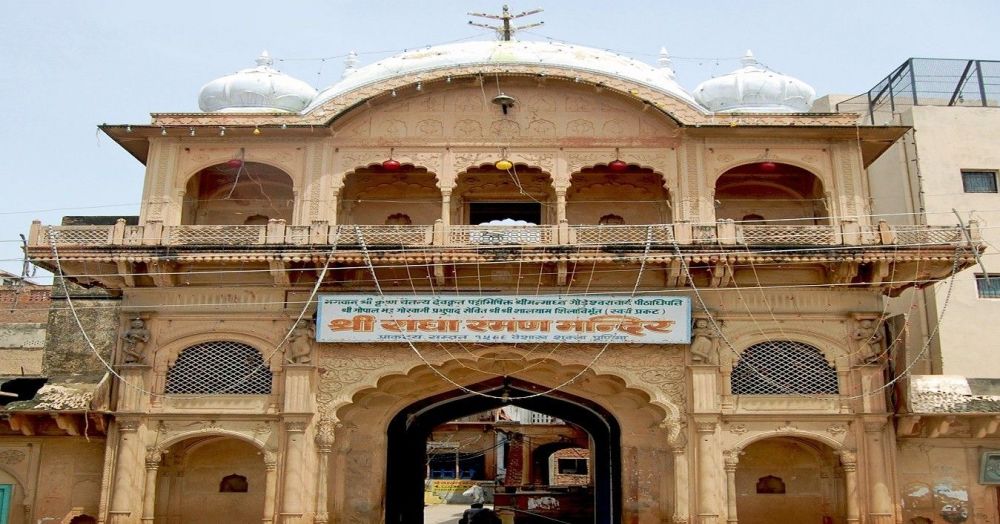

Nestled in the heart of Vrindavan, the sacred town renowned for its connection to Lord Krishna, the Radha Raman Temple stands as one of the most venerated shrines in the region. This historic temple has been a focal point for pilgrims and spiritual seekers for centuries, making it an integral part of Vrindavan's rich tapestry of religious tourism.
The history of tourism in Vrindavan is closely tied with the allure of its temples, and the Radha Raman Temple is no exception. Established in 1542 AD by the great saint Sri Gopala Bhatta Goswami, it is one of the oldest surviving temples in the area. Gopala Bhatta Goswami, who was one of the Six Goswamis of Vrindavan, has greatly contributed to the propagation of the Gaudiya Vaishnavism tradition, bringing devotees from all over the world to this sacred location.
The deity of Radha Raman, considered to be self-manifested from a saligram, has captivated the hearts of devotees for generations. The uniqueness of the deity is that it is one of the few that still exists from the time of the Goswamis, making the temple a significant spiritual heritage site and a must-visit place for those following the Gaudiya Vaishnavism path.
While Vrindavan has always been a significant pilgrimage site for Hindus, the rise in religious tourism has brought a more diverse population of visitors to the Radha Raman Temple. The temple's intricate architecture, serene ambience, and the daily rituals and ceremonies continue to draw visitors from across the globe. The increase in tourism has facilitated the development of the surrounding area with hotels, shops, and eateries mushrooming to cater to the needs of the pilgrims and tourists alike.
In recent years, tourism in Vrindavan has evolved with the integration of modern amenities and digital advancements. Visitors can now learn about the Radha Raman Temple and plan their visit through online platforms before arriving. The increasing popularity of eco-friendly travel and sustainable tourism is also having an impact on how pilgrimage sites like the Radha Raman Temple approach their facility management and visitor services.
Virtual reality experiences, advanced booking systems, and improved transportation options have all contributed to making the pilgrimage to the Radha Raman Temple more accessible and comfortable, without detracting from its spiritual significance. Furthermore, with the rise of social media, images and stories from the Radha Raman Temple frequently capture the imagination of potential travelers, sparking interest and inspiring visits to this venerable destination.
Despite the changing trends in tourism, the essence of the Radha Raman Temple remains unchanged. The daily worship and the annual festivities like Janmashtami, the Holi festival, and the Jhulan Yatra continue to be observed with traditional fervor, attracting both the faithful and the curious. The temple's dedication to preserving the customs and rituals instituted by Sri Gopala Bhatta Goswami ensures that visitors can still experience the original spiritual atmosphere, even amidst the evolving landscape of modern tourism.
The Radha Raman Temple's enduring appeal lies in its ability to fuse the ancient with the new, maintaining its spiritual legacy while adapting to the needs of the modern visitor. Whether seeking enlightenment, cultural enrichment, or simply the tranquil experience of being in a place steeped in devotion, tourists will find that the Radha Raman Temple is an eternal testament to Vrindavan's spiritual allure.